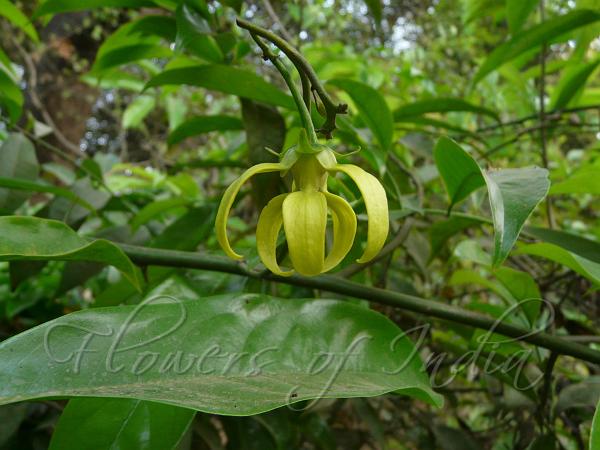|
| Hari Champa |
|

|

| File size | 692707 |
| Original date | 4/14/11 6:51 AM |
| Resolution | 2560 x 1920 |
| Flash | Flash did not fire, auto |
| Focal length | 4.6mm |
| Exposure time | 1/30s |
| Aperture | 2.8 |
| Focus Distance | |
| Metering Mode | Spot |
| Camera make | Panasonic |
| Camera model | DMC-FZ18 |
| Sensor type | OneChipColorArea |
|
|
|
Photo: |
Botanical name: Artabotrys hexapetalus Family: Annonaceae (sugar apple family)
Synonyms: Annona hexapetala, Artabotrys odoratissimus
Synonyms: Annona hexapetala, Artabotrys odoratissimus
Also known by its common name in India as "Manorangini", Hari Champa has
absolutely intoxicating fragrance! This species is native to India and
tropical Asia. A medium size climbing shrub 8-10 ft, producing flowers
that are greenish in color and fade to yellow with age, and
are extremely fragrant. Once picked they are very long
lasting and hold their scent for days, if kept in water, permeating an entire
room. Flowers have three outer and three inner greenish yellow petals -
hence the name hexapetalus. It is a fruity sweet smell - the Manipuri
name Chini Champra, meaning sugar lemon, is indicative of that.
Narrowly elliptical leaves, 6-15 cm long, 2-4.5 cm wide, are usually 3-4 times
as long as wide, acute or almost so at base, short-acuminate at the tip,
not glossy. Lateral veins are 8-16 pairs. Fruits are 3-4 cm long when ripe,
ovoid and smooth. When young, this
climber grows just like a regular shrub but at 5-6 ft, will start
to vine. It is not an aggressive vine.
| Identification credit: Tabish | Photographed in Delhi & Maharashtra. |
• Is this flower misidentified? If yes,